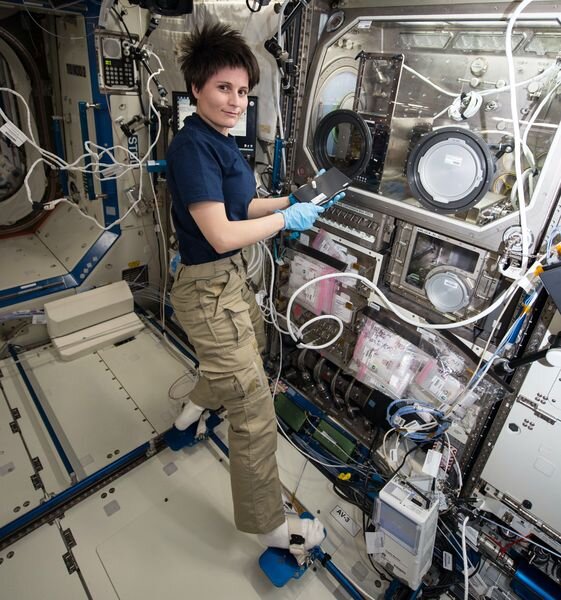![ESA astronaut Samantha Cristoforetti using the ISS 3D Printer [Source: NASA]](https://fabbaloo.com/wp-content/uploads/2020/05/image-asset_img_5eb08c1406c5c.jpg)
I’m reading a piece describing the current state of “in-space manufacturing” (ISM) and am wondering how far this concept suggests constraints on digital inventories.
For those not familiar with the development of ISM, it’s been a long experiment by NASA to create a means of manufacturing parts in space to avoid the cost of sending heavy replacements to space on very expensive rockets.
In-Space Manufacturing
Their process began some years ago with the help of Made In Space, a startup hoping to develop technology for this purpose. This eventually led to the flight and installation of a filament-based 3D printer on the International Space Station.
The first experiments worked out very well, as the test 3D prints made on this device proved little different than those made on an identical device on the ground. With this device multiple spare parts were produced, as the machine was demonstrably handy to have available. However, things are busy on the International Space Station and the 3D printer was eventually packed away to make room for other important experiments.
Since then other 3D printing and manufacturing experiments have taken place, including the use of a “Refabricator” that could potentially recycle the thermoplastics used in 3D printing.
Space Station Parts Digital Inventory
But what’s curious to me today is some statistics I encountered in the story from Space Daily. They say:
“Astronauts conduct scientific research using dozens of special facilities aboard the space station, which also provides them with a place to eat, sleep, relax and exercise. To make all of this possible requires sending more than 7,000 pounds of spare parts to the station annually. Another 29,000 pounds of spaceflight hardware spares are stored aboard the station and another 39,000 on the ground, ready to fly if needed.”
That’s an awful lot of spare parts. Indeed, it would be hugely expensive to send and store them on the space station, so it’s clearly desirable to be able to produce a given part on demand.
Space Station Parts Digital Inventory
I wondered how these statistics might change if a truly operational ISM facility were actually available. Would ALL of these parts be made on demand? Could all of the inventory be eliminated?
I think not, and there’s some interesting logic that could be applied here.
First, there are likely many spares that include complex, non-3D printable components, such as an electronic control board, for example. Those would be “off the list” and would have to be maintained in the traditional manner. Only a subset of the parts would be potentially usable for on demand access.
Now the interesting part. Of these 3D printable spares, would all of them be available on demand?
Risk-Based Digital Inventory
Again, I think not. There are likely different risk levels on some of these parts. For example, it is quite possible some parts are of such a critical nature that it would be foolhardy to add the extra step of 3D printing that type of part.
Even though the 3D printer may be reliable, it could be unreasonable to add any production steps that might fail in an emergency.
Thus there would likely be some kind of risk formula used to assess the usability of on demand production for each part. This would determine the maximum degree of 3D printing usage, at least for spare parts. Some parts would be available digitally through on demand production, while others would have to be physically retained.
The physical inventory of those 75,000 parts will be diminished, but not eliminated. It’s not clear to me by what percentage it will shrink, as that depends on other people’s risk assessments.
Digital Inventory Constraints
This principle could and likely should be applied to ground-based digital inventory projects. Not everything should be held solely in digital form; some parts may demand a physical manifestation simply because of their importance.
For those companies considering the development of a digital inventory, this concept could play an important role in scaling the project. Some parts should NOT be placed in digital inventory, while others could easily be used in that manner.
Do you know which parts are which?
Via Space Daily

